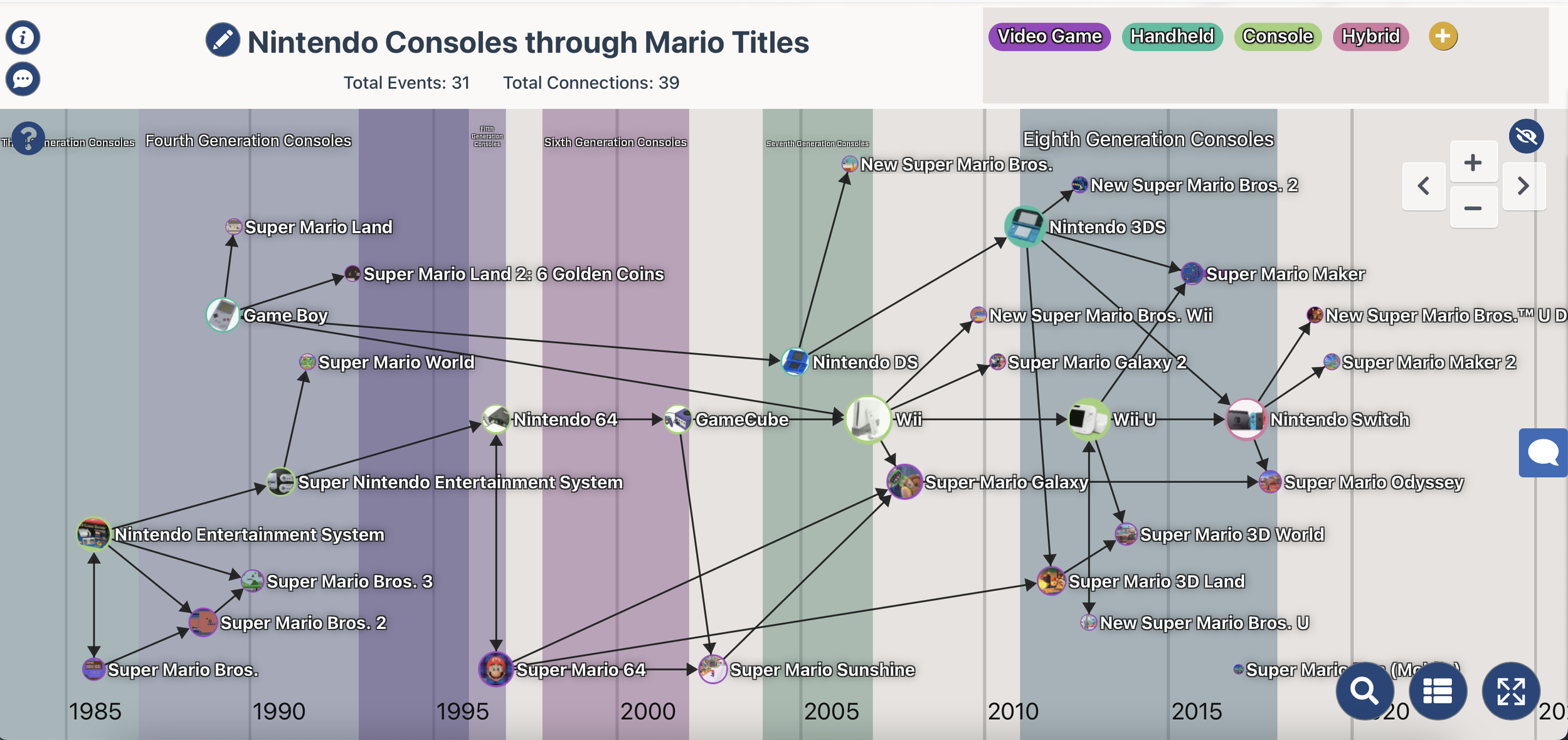
GUIDE TO DIGITAL TIMELINE ASSIGNMENTS
Introduction
This guide is designed to help instructors integrate Digital Humanities assignments into existing syllabi. It breaks down why digital timelines are useful for students and scholars, what a timeline is designed to teach, how students will be successful, and which resources are available for students and professors to ensure a positive learning experience.
Why Are Timelines Useful for Scholars?
Timelines are an incredibly effective tool for learning. Making timelines enables students to keep track of key events they are studying and visualize how events relate to one another. One excellent tool for making digital timelines, ClioVis, was developed by Dr. Erika Bsumek at the University of Texas at Austin. This guide will focus on how to make timelines using a free ClioVis account.
What is ClioVis?
Developed by Dr. Erika Bsumek, ClioVis is a digital timeline tool that helps students ands researchers visualize their data.
Goal of the Assignment
A timeline assignment aims to build students’ digital dexterities. A timeline can help students develop many of the same skills as a traditional essay, However timelines are especially useful for students in helping build their argument by visually categorizing and connecting each piece of evidence to an overall thesis.
How to Make a Timeline
ClioVis has over a dozen individual tutorials to teach students how to use every feature of the timeline software, from how to sign up for a free account, to creating their first timeline project, collaborating with their peers, populating timelines with events and eras, adding images and audio, all the way to presenting and sharing their finished timelines.
Example Timeline
The timeline below aims to show the immediate causes and effects of the 13 colonies declaring independence from Britain.
Try interacting with the timeline by zooming in and out with your mouse, dragging the timeline left and right, clicking on events and eras, hiding the colored category tags, etc.
Below are some things this example timeline does well and some areas that could be improved.
Successes
It is clear how each event contributed to the Declaration of Independence because of how the student connected the event nodes.
This example student used ClioVis’ categories to draw out major themes they wanted to address.
The student added images to many of the events.
Visually, the timeline makes an argument about which events led to the Declaration of Independence and which events came about as a result.
Improvements
The eras should have descriptions when you click on them to explain what they are.
The descriptions of each event are quotes rather than an explanation in the student’s own words. While descriptions can incorporate quotes and can be shorter than an essay paragraph, they should still be an explanation of the event in the student’s own words.
The connections have a brief explanation, but these could be more effective if they were longer than one sentence.
While the student cited their sources for the quotes, they should cite the images they used as well, and they should consult many different sources.
